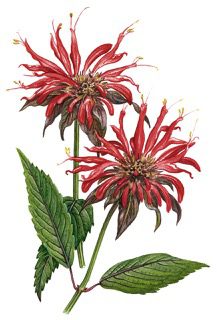

Bee balm, also known as Horsemint or Bergamot, can be beneficial for dogs. It has properties that alleviate pain, prevent viral infections, aid digestion, and treat renal issues. However, foraging for bee balm should be done with caution as some plants around it may be toxic to dogs.
Bee balm has antibacterial, antifungal, and antiviral properties that can help prevent infections. It also contains polyphenols that protect the body from viruses. In addition, it is used as a herbal remedy for gastritis and spastic colon, and aids digestion. Bee balm leaves can be used as salad leaves, and the flower heads and leaves make aromatic herbal tea.
Foraging for bee balm should be done with caution as some plants around it may be toxic to dogs. Some dogs may find the taste of bee balm leaves unpalatable. Eating excessive amounts of bee balm may cause gastrointestinal upset, vomiting, and diarrhea due to its high fiber content.
Bee balm leaves can be eaten raw or cooked, and bee balm supplement capsules are available as an alternative. However, it is recommended to seek professional advice from a veterinarian before using bee balm medicinally for your dog. Bee balm can also be used topically on infected areas by steeping a few leaves in hot water and using the cooled down infusion to clean the area.
Bee balm, also known as Monarda, is a flowering herb that belongs to the mint family. It has a strong aroma and a slightly sweet taste. Bee balm is rich in antioxidants, vitamins, and minerals, making it a great addition to a dog's diet. It can help boost their immune system, aid in digestion, and promote healthy skin and coat. However, it should be given in moderation as too much can cause digestive upset.
Although bee balm is generally safe for dogs, there are some risks associated with its consumption. If ingested in large quantities, it can cause vomiting, diarrhea, and stomach cramps. Additionally, some dogs may be allergic to bee balm, which can cause skin irritation, itching, and swelling. Therefore, it's important to monitor your dog's intake and watch for any adverse reactions.
In extreme cases where your dog has ingested a large amount of bee balm or is showing signs of an allergic reaction, it's important to seek veterinary care immediately. Your vet may induce vomiting or provide supportive care to manage any symptoms.
Safer alternatives to bee balm include basil and oregano, which are also herbs rich in antioxidants and vitamins. These can be added to your dog's food in small amounts for added flavor and nutrition.
A serving idea for bee balm is to sprinkle a few leaves over your dog's dinner or mix it into their homemade treats. Remember to start with small amounts and monitor for any adverse reactions.